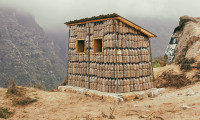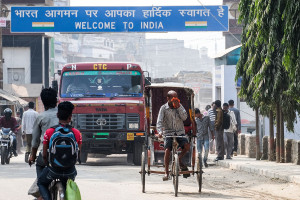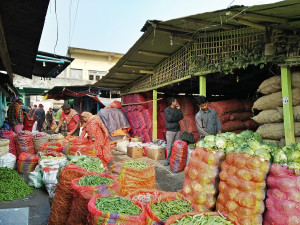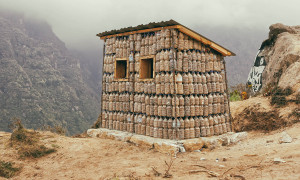Money
Pokhara airport: China’s soft power, Nepal’s hard landing
From long-delayed dream to a lightning rod of controversy, Pokhara International Airport is caught in a tangled web.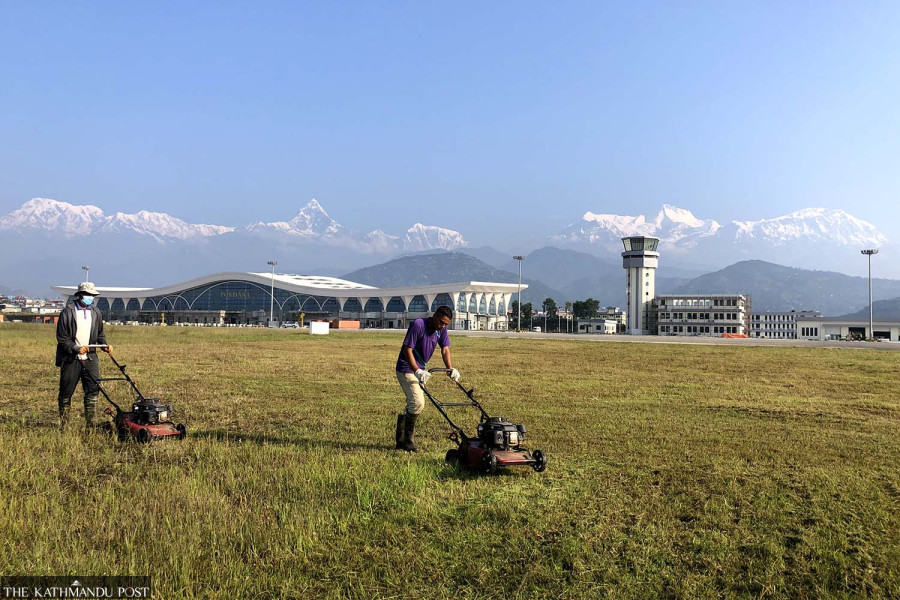
Sangam Prasain
The Pokhara International Airport project, long touted as a landmark in Nepal’s aviation history and a cornerstone for its tourism ambitions, has become a lightning rod of controversy.
From its early conception to its eventual completion, the airport’s trajectory has been fraught with allegations of corruption, procedural manipulation, inflated costs, and emerging geopolitical entanglements.
Constructed with a $215.96 million soft loan from China’s EXIM Bank and built by a Chinese state-owned enterprise, the project has come to symbolise the complexities and consequences of foreign-funded infrastructure in developing nations like Nepal.
Although China has denied all allegations of wrongdoing, a recent parliamentary subcommittee report has unveiled serious flaws in the project’s construction, bidding, and financial handling. These revelations have reignited public debates over transparency, accountability, and the nature of Nepal’s growing economic dependence on its northern neighbour.
This explainer unpacks the layers of the Pokhara International Airport saga—tracing its historical roots, mapping the evolution of controversies, and highlighting the broader implications for governance and foreign engagement in Nepal.
A dream in the making: Early years
The vision for a regional international airport in Pokhara dates back over five decades. In 1971, with assistance from the Asian Development Bank, the German consulting firm DIWI identified a suitable site at Chhinedanda and prepared a master plan for the airport. The Government of Nepal moved swiftly, acquiring over 3,100 ropanis of land in 1975 to secure the area.
Progress accelerated in 1989 when the Japan International Cooperation Agency (JICA) conducted a detailed feasibility study. The blueprint included a 2,500-meter runway and modern facilities, with an estimated cost of $39.6 million. Local firm Joshi Associates refined the plan further in 1993 and JICA again reviewed it, with a proposal for phased construction between 1995 and 2010.
But Nepal’s political turbulence disrupted these aspirations. The Maoist insurgency of the 1990s, coupled with instability in Pokhara’s tourism sector, put off significant infrastructure investments. It was only after the signing of the Comprehensive Peace Agreement in 2006 that attention returned to the project. Joshi Associates prepared a new concept paper in 2008, and by 2010, detailed engineering designs were finalised.
A political pivot: Enter China
Momentum surged in 2011 when the then Prime Minister Baburam Bhattarai’s government began exploring alternative funding avenues. Talks with Chinese companies quickly gained traction. In September 2011, an MoU was signed between Nepal’s Ministry of Finance and China CAMC Engineering Co Ltd., witnessed by the then Chinese ambassador Yang Houlan and signed by then Finance Minister Barsha Man Pun.
This was a turning point. The MoU pledged Nepal’s “solid and substantial support” for CAMC’s bid, effectively favouring the firm even before the bidding process began. When Nepali Congress leader Deep Kumar Upadhyay leaked this clause, it created new suspicion. The Commission for the Investigation of Abuse of Authority (CIAA) seized related documents, citing potential irregularities in bidding. Though the investigation was soon dropped, the damage to public trust had been done.
Political and civic pressure mounted. Frustrated by decades of delay, Pokhara residents and civil society activists staged protests demanding the airport’s construction. These demonstrations, amplified by opposition leaders, pushed the Civil Aviation Authority of Nepal (CAAN) to call for bids in February 2012. Yet the bidding process only deepened the controversy.
Questionable tender
Before the financial proposal was opened, the then Minister for Tourism and Civil Aviation Post Bahadur Bogati, was informed by the finance ministry that as the China EXIM bank had offered a concessional loan for the project, it had set a condition that the project should be built by a company ‘recommended’ by the lenders. This put the civil aviation body in a fix.
There was more drama to follow. On May 4, 2012, the final deadline for submitting the bids, the CAAN received only three confirmed bids to develop the airport.
Three of the 10 Chinese firms that obtained bid documents—China CAMC Engineering Co, Sinohydro Corporation and China International Water and Electric Corporation—returned them to the CAAN. The CAAN shortlisted three, all Chinese state-affiliated entities vetted by China’s Ministry of Commerce and the China International Contractors Association.
Insiders claim the Chinese Embassy in Kathmandu was involved in the entire process. Companies were reportedly instructed to verify their bids at the embassy with a pre-decided pricing framework. Only three firms returned the bid documents, and the fate of the seven pre-qualified companies remains a mystery.
Joshi Associates had projected total cost at Rs12.72 billion (around $169.69 million at $1=Rs75 exchange rate) at that time. The government expected to secure a soft loan of approximately $145 million. But many were shocked by the financial proposals.
CAMC’s bid, though the lowest, was $305 million. Sinohydro quoted $337.82 million, and China International Water and Electric went even higher at $349.28 million. All these figures were drastically higher than Nepal’s estimates, even after accounting for inflation.
CAAN officials, alarmed by the inflated bids, protested internally. The agency’s employees’ union accused CAMC of colluding with certain political figures to inflate the project cost. Former Civil Aviation Minister Deep Kumar Upadhyay denounced the process, terming it corrupt and manipulative. By contrast, the then-ruling Maoist party staged rallies in Pokhara supporting the airport, arguing that any delay would hinder national development.
Revised estimates, reluctant approvals
As public pressure mounted, CAMC made a surprising move—it offered to execute the project at the government’s estimated cost. This opened a new chapter. China Airport Construction Company, a CAMC affiliate, submitted a revised cost study totalling $264 million in 2013. After including a 16 percent escalation and 13 percent VAT, the final figure aligned closely with CAMC’s original bid.
But the Khil Raj Regmi-led government put the project on the back-burner. Then it was then-Tourism Minister Bhim Acharya in the Sushil Koirala-led government who revived it.
Finance Minister Ram Sharan Mahat rejected the offer outright. Comparing it to the Gautam Buddha International Airport which was being built with ADB funding, he called the proposal “outrageous.” A new independent evaluation was commissioned.
An expert panel from the Institute of Engineering, Pulchowk, finally determined that the airport could be built for $215.96 million. This estimate formed the basis of a fresh proposal submitted to the Cabinet.
On April 7, 2014, CAAN’s board approved the new plan. A soft loan request was submitted to China’s EXIM Bank. On May 22, 2014, CAAN signed a revised contract with CAMC for $215.96 million. Despite concerns that legal norms demanded a new tender due to the long delay of nearly two years, the project was pushed forward under ministerial orders.
Escrow account dispute
Yet progress was again derailed. China EXIM Bank demanded the creation of an escrow account—a financial mechanism to ensure repayment. Initially, it wanted revenue from all Nepali airports to be deposited into this account, effectively granting it control over the country’s aviation income. CAAN refused. After prolonged negotiations, a compromise was reached in 2017. Only revenue from Pokhara International Airport would be deposited into the escrow account.
The formal loan agreement was signed in March 2016 during Prime Minister KP Sharma Oli’s visit to Beijing. Terms were finalised: 25 percent of the loan would be interest-free, and the remaining 75 percent would come at 2 percent annual interest, repayable over 20 years with a 7-year grace period. Nepal’s Finance Ministry lent the amount to CAAN at 5 percent interest rate. The government also assumed the foreign exchange risk tied to yuan fluctuations.
Construction officially began on November 1, 2017. The first disbursement was made in April 2018. Finally, the airport was completed on March 31, 2022, and inaugurated on January 1, 2023, amid much fanfare.
Fresh investigations, troubling findings
Even as the runway opened to flights, questions lingered. A recent subcommittee report from the House of Representatives’ Public Accounts Committee revealed alarming irregularities.
One major concern was the soil used to elevate the runway. The contract stipulated that the soil should be transported from at least five kilometres away. Approximately $5.5 million was paid for this. Yet investigators found no evidence that the soil came from outside sources.
The contract specified a runway elevation of 815 to 816 metres above sea level, but the actual elevation was just 804 metres. This not only violated contractual terms but also raised concerns about the airport’s safety and ability to handle large aircraft.
There has also been new scrutiny of the environmental assessment process. The 2014 Environmental Impact Assessment (EIA) did not call for hill flattening or deforestation. However, in 2020, as construction neared completion, officials discovered that Rithepani Hill obstructed aircraft approach paths.
Suddenly, a plan was pushed to cut down over 600 trees, including 80 large ones, and level two hilltops. Public outcry followed. A supplementary EIA was rushed through to legalise these changes. Critics now suspect the runway elevation was deliberately kept lower to justify cutting the hill, suggesting collusion between contractors and certain officials.
The larger picture: Lesson for Nepal
The Pokhara International Airport is more than a physical structure—it is a litmus test for Nepal’s institutional capacity to manage large-scale infrastructure. It reflects both the country’s developmental ambitions and its persistent failures in regulatory oversight, public procurement, and political governance.
The involvement of Chinese state-owned firms and the soft loan terms also puts a spotlight on Nepal’s growing dependency on Beijing, raising concerns over debt sustainability and strategic autonomy.
The final report from the Public Accounts Committee may soon recommend legal action against officials and contractors involved. But beyond punitive measures, the real challenge will be systemic reform.
If Nepal hopes to benefit from future infrastructure investment—whether from China, India, or multilateral institutions—it must address the procedural gaps and political interference plaguing projects like Pokhara.
With only one Nepali airline flying to an international destination a week, the airport remains a paradox: a symbol of progress built on a foundation of flawed governance.




 15.12°C Kathmandu
15.12°C Kathmandu

